
Walter Davis Pidgeon was a Canadian-American actor. He earned two Academy Award for Best Actor nominations for his roles in Mrs. Miniver (1942) and Madame Curie (1943). Pidgeon also starred in many notable films such as How Green Was My Valley (1941), The Bad and the Beautiful (1952), Forbidden Planet (1956), Executive Suite (1954), Voyage to the Bottom of the Sea (1961), Advise & Consent (1962), Funny Girl (1968), and Harry in Your Pocket (1973).

John Marriott was an American actor of the stage, film and screen, whose career spanned five decades. His acting career began on the stage in Cleveland, prior to his moving to New York City, where he was a regular performer on the Broadway stage. In the 1940s he also began to perform in films, when he reprised his role from the hit Broadway play, The Little Foxes, in the William Wyler movie of the same name, starring Bette Davis. While he appeared infrequently in films, he was quite active in theater, both on Broadway and in regional productions. His final performance was on-screen, in the Al Pacino film, Dog Day Afternoon.
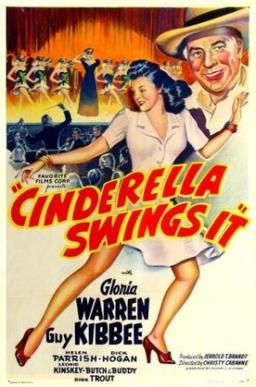
Cinderella Swings It is a 1943 American comedy-drama film directed by Christy Cabanne from a screenplay by Michael L. Simmons, based on short stories by Clarence Budington Kelland about small-town philanthropist Scattergood Baines. Produced and Distributed by RKO Radio Pictures, it was released on January 22, 1943, and stars Guy Kibbee and Gloria Warren. It was the last of the six films in the Scattergood Baines series and the only one without the word “Scattergood” in the title. Originally called Scattergood Swings It, the picture was renamed because the franchise was declining in popularity.
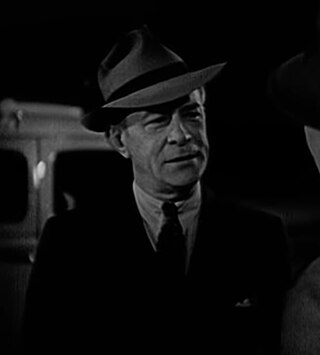
Thomas E. Jackson was an American stage and screen actor. His 67-year career spanned eight decades and two centuries, during which time he appeared in over a dozen Broadway plays, produced two others, acted in over a 130 films, as well as numerous television shows. He was most frequently credited as Thomas Jackson and occasionally as Tom Jackson or Tommy Jackson.

Almira Sessions was an American character actress of stage, screen and television. Born in Washington, D.C., her career took her through all the acting mediums of the 20th century. She appeared in over 500 films and television shows. She worked into her 80s, finally retiring shortly before her death in 1974 in Los Angeles.

Eugene Borden was a French-American actor, active in Hollywood from the silent era until the mid-1960’s. Born in Paris, he immigrated to the United States as a teenager, and entered the film industry a short time later. He appeared in over 150 films, as well as shorts, serials, and television shows.

John Sheehan was an American actor and vaudeville performer. After acting onstage and in vaudeville for several years, Sheehan began making films in 1914, starring in a number of short films. From 1914 to 1916, he appeared in over 60 films, the vast majority of them film shorts.

John Hugh Elliott was an American actor who appeared on Broadway and in over 300 films during his career. He worked sporadically during the silent film era, but with the advent of sound his career took off, where he worked constantly for 25 years, finding a particular niche in "B" westerns.

John Melvin Bleifer was an American actor whose career began at the end of the silent film era, and lasted through the mid-1980s. He appeared in feature films and film serials, and in a number of television series and miniseries. Bleifer also acted on stage, and appeared in several Broadway productions.
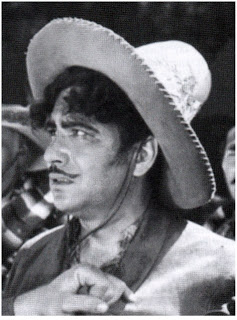
Richard Edward Botiller was an American character actor of the 1930s and 1940s. While most of his roles were un-credited, many of them nameless as well, he was given more substantial roles occasionally.

Claire Carleton was an American actress whose career spanned four decades from the 1930s through the 1960s. She appeared in over 100 films, the majority of them features, and on numerous television shows, including several recurring roles. In addition to her screen acting, she had a successful stage career.

George M. Carleton was an American character actor of the 1940s. He was a stage actor who began a brief career, during which he appeared in over 100 films, including features, film shorts, and film serials.
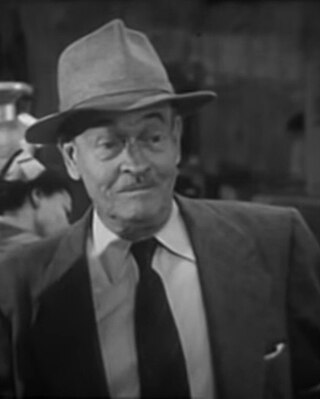
James Wheaton Chambers was an American actor during the 1930s, 1940s, and 1950s. He appeared in more than 200 films and television series during his career.

Harlan Briggs was an American actor and Vaudeville performer who was active from the 1930s until his death in 1952. During the course of his career he appeared on Broadway, in over 100 films, as well as appearing on television once towards the end of his career.

James Bush was an American actor from the 1930s until the early 1950s. He appeared in more than 100 television shows and films, more than 80 of them being feature films.
Harry Marker was an American Oscar-nominated film editor, who also worked in the television medium. Over the course of his 45-year career, he worked on more than 100 films and television shows. In 1946 he was nominated for an Oscar for Best Film Editing for The Bells of St. Mary's.
Arthur T. Horman was an American screenwriter whose career spanned from the 1930s to the end of the 1950s. During that time he wrote the stories or screenplays for over 60 films, as well as writing several pieces for television during the 1950s.
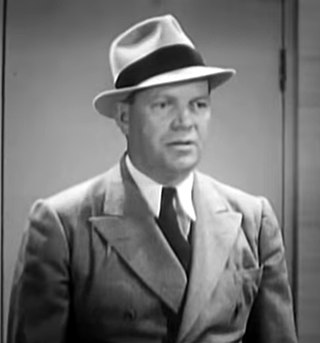
John F. Kelly was an American actor whose career spanned the very end of the silent film era through the 1940s. While most of his parts were smaller, often-uncredited roles, he was occasionally given a more substantial supporting or even featured role.
Arthur Martinelli was an American cinematographer whose career spanned from the silent era through the golden age of American movies. During that time he shot over 100 films. A pioneer in the industry, he was the cinematographer to film the first movie to star Ethel and John Barrymore.

Frank Redman was an American cinematographer from the end of the silent era through the 1960s. During his almost 40-year career, he shot over 60 feature films, as well as several film shorts and serials. In the 1950s, he transitioned to the smaller screen, where he was most well known for his work on the iconic television show, Perry Mason from the end of the 1950s through 1965.

















